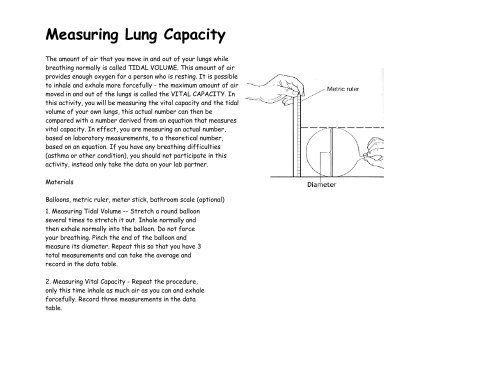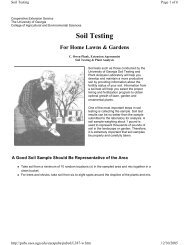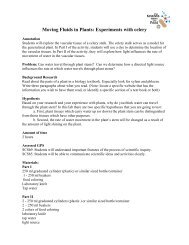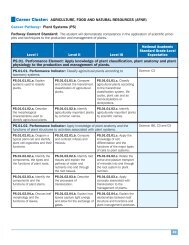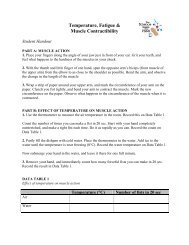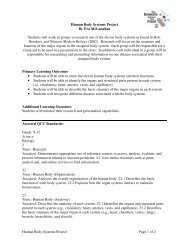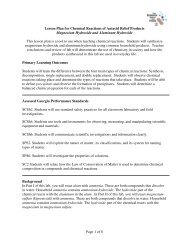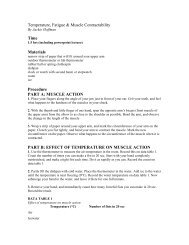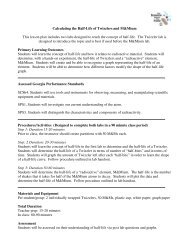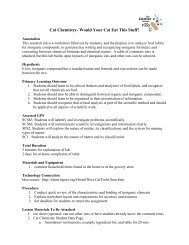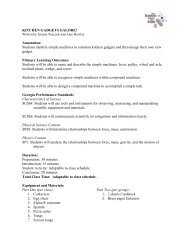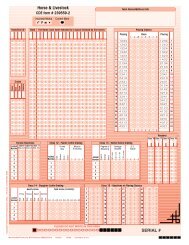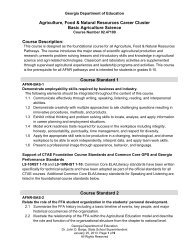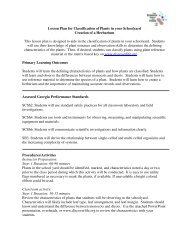Measuring Lung Capacity
Measuring Lung Capacity
Measuring Lung Capacity
You also want an ePaper? Increase the reach of your titles
YUMPU automatically turns print PDFs into web optimized ePapers that Google loves.
<strong>Measuring</strong> <strong>Lung</strong> <strong>Capacity</strong>The amount of air that you move in and out of your lungs whilebreathing normally is called TIDAL VOLUME. This amount of airprovides enough oxygen for a person who is resting. It is possibleto inhale and exhale more forcefully - the maximum amount of airmoved in and out of the lungs is called the VITAL CAPACITY. Inthis activity, you will be measuring the vital capacity and the tidalvolume of your own lungs, this actual number can then becompared with a number derived from an equation that measuresvital capacity. In effect, you are measuring an actual number,based on laboratory measurements, to a theoretical number,based on an equation. If you have any breathing difficulties(asthma or other condition), you should not participate in thisactivity, instead only take the data on your lab partner.MaterialsBalloons, metric ruler, meter stick, bathroom scale (optional)1. <strong>Measuring</strong> Tidal Volume -- Stretch a round balloonseveral times to stretch it out. Inhale normally andthen exhale normally into the balloon. Do not forceyour breathing. Pinch the end of the balloon andmeasure its diameter. Repeat this so that you have 3total measurements and can take the average andrecord in the data table.2. <strong>Measuring</strong> Vital <strong>Capacity</strong> - Repeat the procedure,only this time inhale as much air as you can and exhaleforcefully. Record three measurements in the datatable.
3. Convert the diameters to a volume using the graphand record this in your table.4. Estimated Vital <strong>Capacity</strong>Research has shown that the capacity of a person's lungs is proportional to the surface area of his or her body. To find the surface area,you will need to know your height and weight. There are a couple of different ways to calculate your body surface area mathematically.Either use the equation below or go to a website that has an automatic calculator. (A google search on "body surface area calculator willyield many pages that have these calculators)Once you have calculated your surface area, a second equation will calculate your estimated vital capacity.Males: SA x 2500Females SA x 2000
DATA TABLETidal Volume Vital <strong>Capacity</strong> Estimated Vital <strong>Capacity</strong>Trial123BalloonDiameterVolume (fromgraph)BalloonDiameterVolume (fromgraph)Height (cm)Mass (kg)Surface AreaVital <strong>Capacity</strong>AverageANALYSIS1. Why is it important to measure tidal volume and vital capacity three times and then get an average?2. Compare your data to other members of the class. How can you account for differences?3. How does your measured vital capacity compare to the vital capacity you estimated using the formula? Which do you think is moreaccurate and why?4. How might an athlete's vital capacity compare to a non-athlete? Explain your reasoning.
APPLICATION1. Examine the data table of a person who entered into a training program. This person's vital capacity was measured over a 60 day period.Use the data to construct a graphDATAGRAPHDay of Training Vital <strong>Capacity</strong>0 480010 484020 489030 493040 498050 518060 52602. What happened to the person's vital capacity over the course of the training period?
3. What probably caused the change?4. How might vital capacity be important to a musician?


